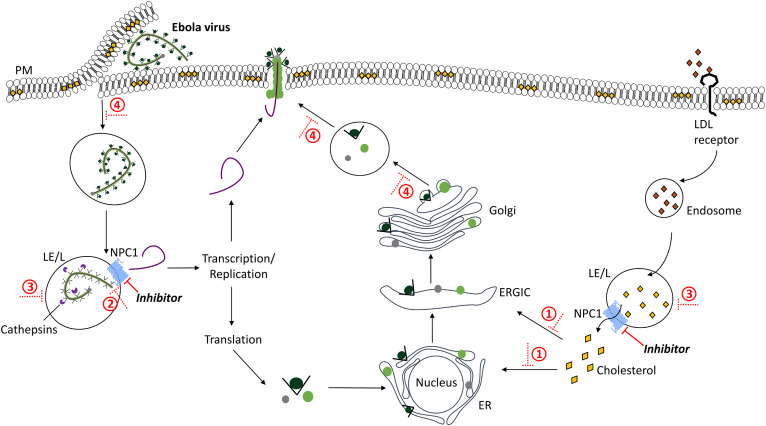Fig. 2.
NPC1, a lipid transporter, is also a receptor for filovirus entry and replication. EBOV enters the host cell via macropinocytosis leading to activation of the EBOV-GP by host cysteine proteases, cathepsin B/L (purple), at the LE/L in a pH-dependent manner. The primed EBOV-GP binds to the second luminal loop of NPC1 and releases the virion into the cytoplasm. Upon release, the virion is replicated and transcribed, where viral structural and accessory proteins (black, dark green, light green, gray) are packed into the ER, and released from the Golgi, where the virus assembles at the PM before release from the cell via exocytosis. Under normal conditions, cholesteryl ester in LDL particles (orange) enters the cell by receptor-mediated endocytosis, is hydrolyzed to cholesterol (yellow) in the LE/L where it binds NPC1 (bright blue) and is transported to other organelles (e.g., PM, ER, ERGIC, Golgi). NPC1 inhibitors or NP-C disease mimetics 1) deplete levels of cholesterol in the cell, 2) hinder the interaction between NPC1 and the EBOV-GP, 3) impair LE/L pH and protease activity, and 4) impair endocytosis and exocytosis, hindering viral infectivity, replication, assembly, and release.

